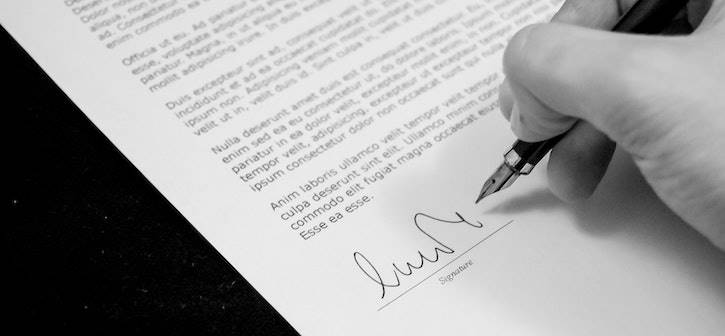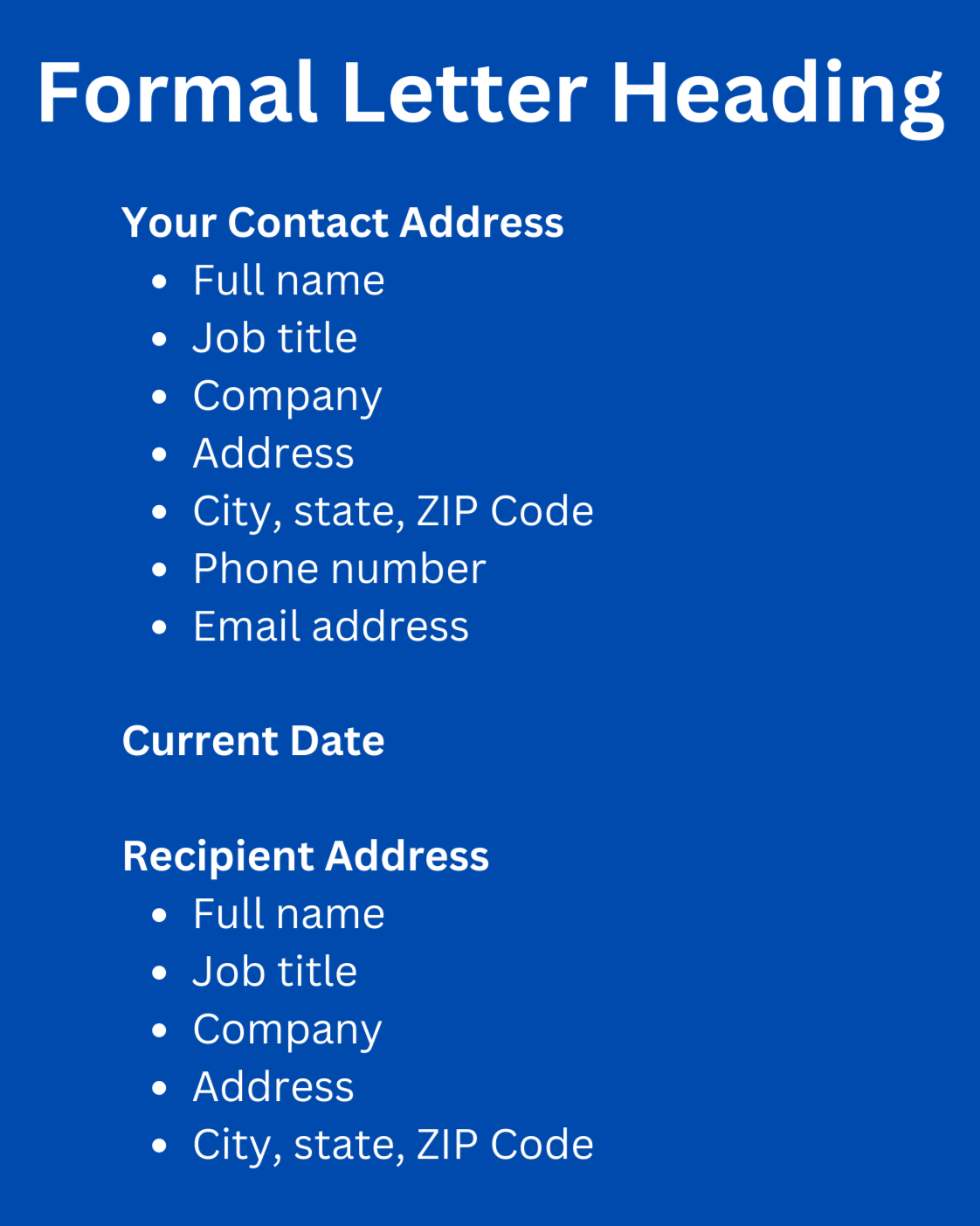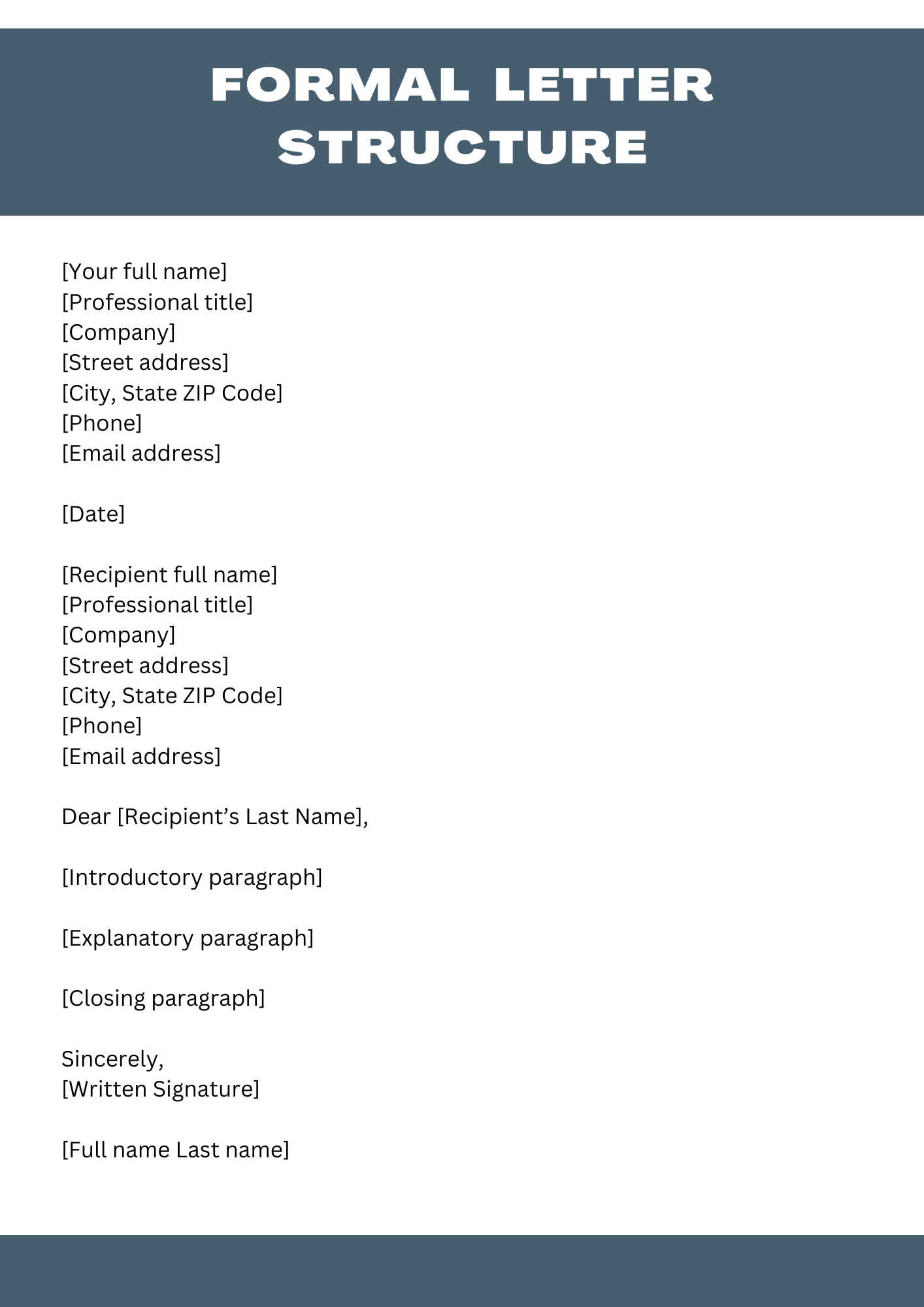
How to Write a Formal Letter
If you have never penned a formal letter before, college application will stump you. The same rings true for job application messages, inquiries, and complaints. Mastering the art of the official letter writing is easy if you have enough information. Today we’ll answer 10 of the most pressing questions on writing formal letters and provide an excellent formal letter sample or two. By the end of this FAQ, you will craft a perfect formal letter without outside assistance.
What Is a Formal Letter?
It is a conventional communication device in academic and business settings. Companies send them out to partners, employees, customers, investors. Individuals can also use formal correspondence to communicate about job-related issues.
While official letters can be used for a variety of purposes, their structure is standard and applied universally across industries and settings. If you learn how to write a formal letter once, you will be able to craft official correspondence for any occasion.
How Are Formal Letters Different from Informal Ones?
You must have written dozens letters over the course of your life, or at least sent off a quick thank-you email or note to your grandma for the birthday gift. This doesn’t mean you can handle formal communication. Informal letters can be handwritten and loosely structured with free use of colloquialisms, contractions, jargon, and slang.
Formal correspondence possesses rigid structure you should follow, and they are always typed, never handwritten. Moreover, you should adhere to the standards and rules of English. Avoid incomplete sentences, prepositions at the end of the sentence, contractions, and colloquialisms.
Why Should I Bother Writing a Formal Letter?
Official correspondence is the backbone of the business world. Over the years, you are likely to write and send many letters for different purposes:
- College application letter is a part of the documentation package you will write before graduating from high school.
- Inquiries about open positions or professional advice also take on a form of an official letter.
- Follow-up communication closes the initial issue, thank-you notes are the typical example of this type of formal letters.
- References or recommendation letters are crucial for the job hunt and college application process.
- Resignation letter or notice is a part of the official process of leaving one job for another.
- Formal letters can also contain complaints, responses to earlier inquiries, raise requests, scholarship and grant applications.
Without a clear understanding of the rules of formal communication, your letters might be lost, rejected, go unanswered. Knowing how to write a formal letter is one requisite of academic and career success.
What Is the Official Letter Format?
Official correspondence looks intimidating unless you know it inside out and understand how to break the letter down into main parts. While they remain the same, the formatting of the letters can differ, depending on the purpose and preferred style of the organization you are addressing.
- Block style is the easiest to master. All blocks of the letter, from heading to sign-off are aligned left with blank lines separating the main parts.
- Standard style aligns all blocks left, expect the heading and the sign-off parts. They are aligned right at the same level.
How Should I Start an Official Letter?
The heading includes your home address and your addressee's mailing address. If you are in doubt about how to address a formal letter, fill the first line with your street address, city, state, and zip code. Leave the following line empty and type the current date. After another blank line, add the recipient's address. It includes the addressee's title and full name, their position and organization name, street address, city, state, and zip code.
If you plan on writing many formal letters for a college application or other purpose, create a template document. Keep your address the same, changing the date and inside address. This will save you lots of time, and you won’t have to brush up on your formal writing knowledge every time.
Which Form of Address Is Appropriate for Formal Writing?
If you've researched how to write a formal letter, «to whom it may concern» might have come up as a suitable salutation in case you know nothing about the recipient's name and position. However, this phrase is outdated. Use «Dear Sir or Madam» instead. If you can learn the recipient's name, title, and position, strive to do so. It will turn your message into a more personal communication device, and you will have a better chance of a positive resolution to your issue.
Do not presume the female recipient's marital status. Always type «Ms.», not «Mrs.» or «Miss» unless you are sure of the recipient's preferences. Adding a professional or social title is appropriate. Include «Dr.», «Rev.», «Professor», and other titles. Start the salutation line with «Dear» and add a colon or a comma after the addressee's name.
How Long Can Formal Letters Be?
Official communication should be short, concise, to a point. The recommended length is three paragraphs. It should be enough to present your issue and suggest a resolution. Shorter letters are acceptable, while longer ones are not advisable, as in the business context time is the most valuable resource and no one will thank you for wasting their time. Irrespective of how much information you wish to present, keep the letter to a single page length.
First paragraph and sentence should state your question or query. Explain your issue. Include supporting evidence, examples, argumentation in the second paragraph. Summarize your point and suggest the next step in the final passage. This is the conventional structure for the formal letter writing. Use it to help the recipient understand and process your letter quickly.
We’ve found an excellent formal letter example to help you make sense of all the new knowledge. Refer to this sample and notice the formatting, spacing, and phrasing.
How Should I Finish the Letter?
After the main body passages, select an appropriate complimentary close. It’s a sign-off phrase standard for formal communication, even if it feels outdated. There are dozens of possible complimentary closings appropriate for official letters, including «Best regards», «Yours truly», «Thank you».
Leave 1 to 4 blank lines for your handwritten signature. Next, type your full name, position, and organization, contact details (email, Skype, phone number, etc.). This block will be aligned left or right, according to your preferred formatting style. Left alignment is typical for block format while right alignment of the closing is a staple of the standard format.
If you wish to enclose additional documents, add a line including the word «Enclosed» or «Encl.». Next, type the names of the papers and their number.
Why Is Proofreading Necessary?
First, if you wish the addressee to take the letter seriously, remove all typos and errors. They make the writing look unprofessional and sloppy. That’s not an impression you want to make when applying for college or a job. Use web applications or professional proofreader’s services to ensure the letter is mistake-free.
Second, spellcheck all addresses and names. The former is crucial for timely mail delivery. A single wrong digit in a zip code, PO box or street address can lengthen the delivery time by days and weeks. Typos in names might offend the addressee and cause misunderstandings if you accidentally make a mistake in your own full name. Pay close attention to these small details when proofreading to prevent miscommunication and offense.
What Should I Do after the Letter Is Done?
Unlike informal communication, formal letters usually require posting. Therefore, you will need to print your message, get an envelope and a stamp. Business envelopes are rectangular or square, you can choose any form without extra adornments. Fold the letter in thirds for a perfect fit in a standard business envelope. To use a square envelope, fold the paper in half twice. Fold the letters carefully with steady hands and do it in one try. If you mail the letter with uneven fold lines, it will look unprofessional and even disrespectful.
Use the top left quarter of the envelope to put your name and address. The bottom right quarter is for the recipient’s name, position, organization, and address. Seal the envelope after sliding in the letter, put on a stamp, and mail it. Keep in mind that UPS is not as quick as Gmail so your letter will only get to its destination in a few days. The response will take even longer to get back.
You know what a formal letter is, how it differs from informal writing. We’ve covered the main structural blocks, from the heading through the main body paragraphs to the complimentary closing. We’ve also stressed the importance of post-writing routines, including proofreading and mailing the letter. Make use of our official letter sample and the answers to common questions, and your formal communication will be flawless.
If you have unanswered questions or require extra help with composing a letter, contact us. We’ll gladly provide assistance with writing, editing, and proofreading.

